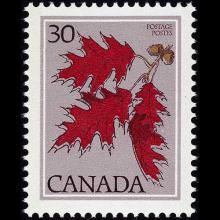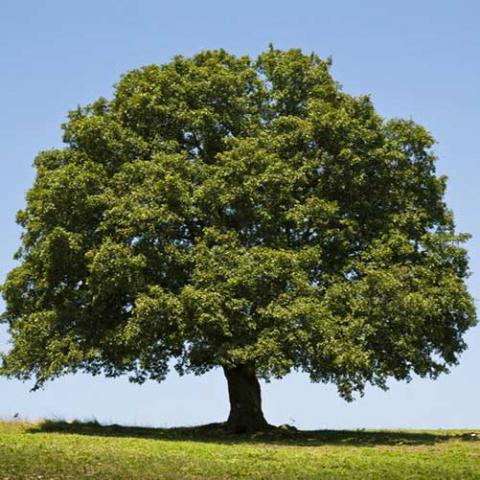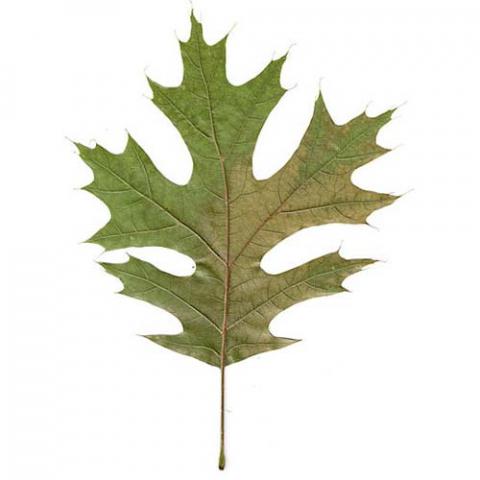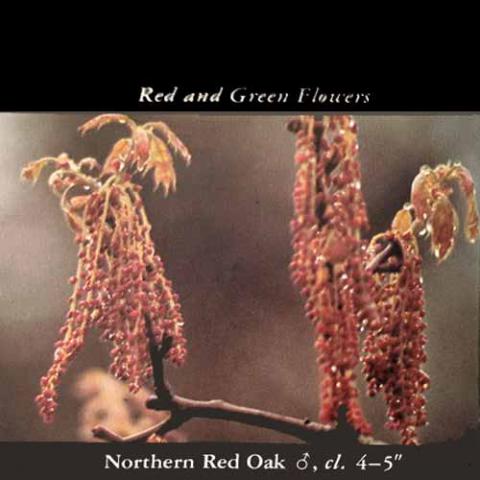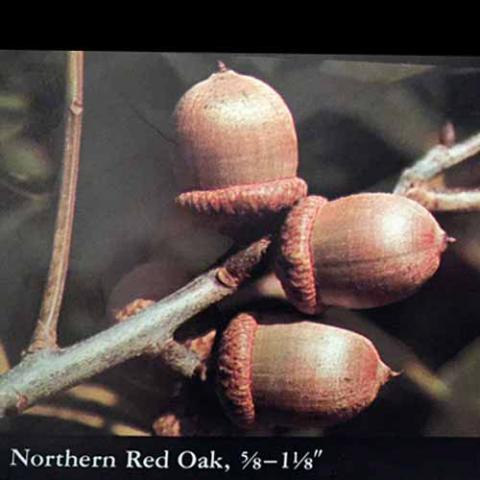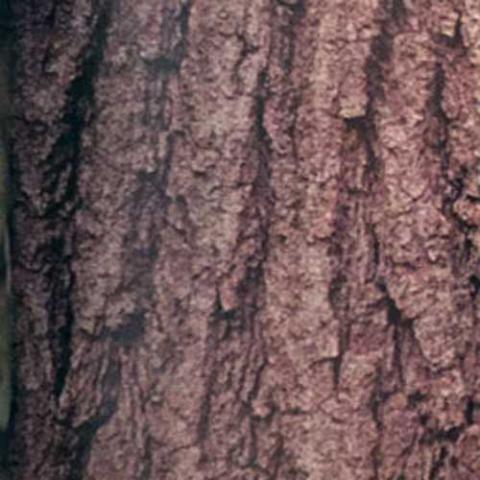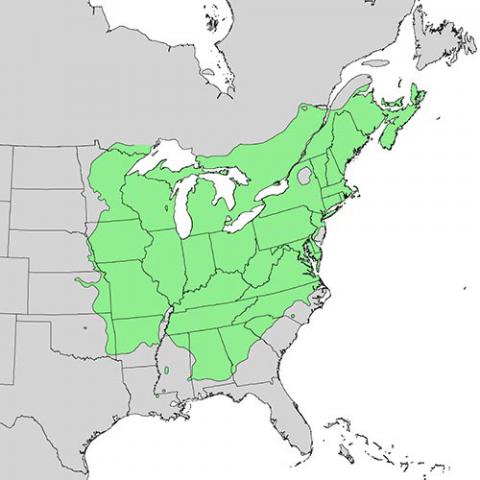NAME(S)
TAXONOMY
PLANTAE ID
THERAPEUTIC
Canada
Issued:
Stamp:
Quercus rubra
Canada
Issued:
Stamp:
Quercus rubra
Canada
Issued:
Stamp:
Quercus rubra
Quercus rubra
The bark and inner bark is antiseptic, astringent, emetic, febrifuge and tonic. It is used in the treatment of diarrhoea, chronic dysentery, indigestion, asthma, severe coughs, hoarseness, intermittent fevers, bleeding etc. Externally, it is used as a wash for skin eruptions, rashes, burns etc. The bark can be chewed as a treatment for mouth sores. The bark contains tannins, experimentally these have been shown to be antiviral, antiseptic, anticancer and also carcinogenic. Any galls produced on the tree are strongly astringent and can be used in the treatment of haemorrhages, chronic diarrhoea, dysentery etc.
Reference: Plants for a Future
Genus species (Plantae): Quercus rubra
Quercus rubra, the northern red oak, is an oak tree in the red oak group (Quercus section Lobatae). It is a native of North America, in the eastern and central United States and southeast and south-central Canada. It grows from the north end of the Great Lakes, east to Nova Scotia, south as far as Georgia, Mississippi, Alabama, and Louisiana, and west to Oklahoma, Kansas, Nebraska, and Minnesota. It has been introduced to small areas in Western Europe, where it can frequently be seen cultivated in gardens and parks. It prefers good soil that is slightly acidic. Often simply called red oak, northern red oak is so named to distinguish it from southern red oak (Quercus falcata), also known as the Spanish oak. Northern Red Oak is sometimes called champion oak. It is also the state tree of New Jersey and the provincial tree of Prince Edward Island.
In many forests, this deciduous tree grows straight and tall, to 28 m (90 ft), exceptionally to 43 m (140 ft) tall, with a trunk of up to 50–100 cm (20–40 in) diameter. Open-grown trees do not get as tall, but can develop a stouter trunk, up to 2 m (6 ft) in diameter. It has stout branches growing at right angles to the stem, forming a narrow round-topped head. It grows rapidly and is tolerant of many soils and varied situations, although it prefers the glacial drift and well-drained borders of streams. It is frequently a part of the canopy in an oak-heath forest, but generally not as important as some other oaks. Detail of mature bark Under optimal conditions, northern red oak is fast growing and a 10-year-old tree can be 5–6 m (15–20 ft) tall. Trees may live up to 500 years according to the USDA, and a living example of 326 years was noted in 2001 by Orwig et al.
Northern red oak is easy to recognize by its bark, which feature bark ridges that appear to have shiny stripes down the center. A few other oaks have bark with this kind of appearance in the upper tree, but the northern red oak is the only tree with the striping all the way down the trunk. Autumn foliage
Bark:Dark reddish grey brown, with broad, thin, rounded ridges, scaly. On young trees and large stems, smooth and light gray. Rich in tannic acid. Branchlets slender, at first bright green, shining, then dark red, finally dark brown. Bark is brownish gray, becoming dark brown on old trees.
Wood: Pale reddish brown, sapwood darker, heavy, hard, strong, coarse-grained. Cracks in drying, but when carefully treated could be successfully used for furniture. Also used in construction and for interior finish of houses. Sp. gr., 0.6621; weight of cu. ft., 41.25 lbs. Autumn red oak leaf
Winter buds: Dark chestnut brown (reddish brown), ovate, acute, generally 6 mm long
Leaves: Alternate, seven to nine-lobed, oblong-ovate to oblong, five to ten inches long, four to six inches broad; seven to eleven lobes tapering gradually from broad bases, acute, and usually repandly dentate and terminating with long bristle-pointed teeth; the second pair of lobes from apex are largest; midrib and primary veins conspicuous. Lobes are less deeply cut than most other oaks of the red oak group (except for black oak which can be similar). Leaves emerge from the bud convolute, pink, covered with soft silky down above, coated with thick white tomentum below. When full grown are dark green and smooth, sometimes shining above, yellow green, smooth or hairy on the axils of the veins below. In autumn they turn a rich red, sometimes brown. Often the petiole and mid-vein are a rich red color in midsummer and early autumn, though this is not true of all red oaks. The acorns mature in about 18 months after pollination; solitary or in pairs, sessile or stalked; nut oblong-ovoid with broad flat base, full, with acute apex, one half to one and one-fourth of an inch long, first green, maturing nut-brown; cup, saucer-shaped and shallow, 2 cm (0.8 in) wide, usually covering only the base, sometimes one-fourth of the nut, thick, shallow, reddish brown, somewhat downy within, covered with thin imbricated reddish brown scales. Its kernel is white and very bitter. Despite this bitterness, they are eaten by deer, squirrels and birds.
Red oak acorns, unlike the white oak group, display epigeal dormancy and will not germinate without a minimum of three months' exposure to sub-40°F (4°C) temperatures. They also take two years of growing on the tree before development is completed.
General: Beech Family (Fagaceae). Native trees often reaching 20–30 m tall, less commonly up to 50 m; bark dark gray or black, shallowly furrowed into broad hard scaly ridges, inner bark reddish to pink; generally developing a strong taproot and network of deep, spreading laterals. Leaves are deciduous, alternate, elliptic, 10–25 cm long and 8–15 cm wide, divided less than halfway to mid-vein into 7–11 shallow wavy lobes with a few irregular bristle-tipped teeth, sinuses usually extending less than 1/2 distance to midrib, glabrous and dull green above, light dull green below with tufts of hairs in vein angles. Male and female flowers are borne in separate catkins on the same tree (the species monoecious), the staminate catkins in leaf axils of the previous year's growth, the pistillate in 2–many-flowered spikes in the leaf axils. Acorns maturing in the second year, about 15–30 cm long, with a broad usually shallow cup, borne singly or in clusters of 2–5. The common name is in reference to the red fall foliage color, red petioles, and reddish interior wood. This is a different species from “southern red oak” (Quercus falcata).
Famous Specimens:
Ashford Oak
A very large Northern Red Oak in Ashford, Connecticut. The tree has suffered falling limbs because of its great age. However, this tree is still a sight to behold; the trunk is 8 m (26 feet) in circumference and the root-knees are also particularly impressive. The oak is located on Giant Oak Lane off U.S. Highway 44. There are several other large oaks in the area.
Chase Creek Red Oak
This forest tree is located on a very rich steep slope in Anne Arundel County, Maryland. It is a high-stump coppice with three leads. It was the state champion oak in Maryland in 2002. The circumference at breast height is 6.7 m (22 feet), the height 41.5 m (136 feet) and the spread 29.9 m (98 feet).
Shera-Blair Red Oak - This majestic red oak tree is located on Shelby Street in the South Frankfort neighborhood in Franklin County, Kentucky, and is the largest red oak tree in the oldest neighborhood in Frankfort, Kentucky. It is in the backyard of a house built in 1914 by architect Arthur Raymond Smith, who at one time worked for D.X. Murphy & Bros., famed architects that designed the twin spires at Churchill Downs. The circumference at breast height is 6.4 m (21 feet), with the trunk reaching higher than 40 feet before the branches begin and an estimated height of 130 feet.
Distribution:
It is a native of North America, in the northeastern United States and southeast Canada. It grows from the north end of the Great Lakes, east to Nova Scotia, south as far as Georgia and states with good soil that is slightly acidic. Often simply called "red oak", northern red oak is formally so named to distinguish it from southern red oak (Quercus falcata), also known as the Spanish oak. It is also the state tree of New Jersey and the provincial tree of Prince Edward Island.
Use:
The northern red oak is one of the most important oaks for timber production in North America. Quality red oak is of high value as lumber and veneer, while defective logs are used as firewood. Other related oaks are also cut and marketed as red oak, although their wood is not always of as high a quality. These include eastern black oak, scarlet oak, pin oak, Shumard oak, southern red oak and other species in the red oak group. Construction uses include flooring, veneer, interior trim, and furniture. It is also used for lumber, railroad ties, and fence posts. Red oak wood grain is so open that smoke can be blown through it from end-grain to end-grain on a flat-sawn board. For this reason, it is subject to moisture infiltration and is unsuitable for outdoor uses such as boatbuilding or exterior trim.
Industry: Northern red oak is an important source of hardwood lumber. The wood is close-grained, heavy, and hard; it machines well and accepts a variety of finishes. It is used for furniture, veneer, interior finishing, cabinets, paneling, and flooring as well as for agricultural implements, posts, and railway ties.
Wildlife: Northern red oak provides good cover and nesting sites (including cavities) for a wide variety of birds and mammals. Deer, elk, moose, and rabbits commonly browse leaves and young seedlings and the acorns are eaten by a wide variety of large and small mammals and birds.
Ethnobotanic: The acorns of red oak (and other oak species) were an important food source for Native Americans. To remove bitter tannins, they were boiled, leached with ashes, soaked for days in water, or buried over winter. Some tribes used red oak bark as a medicine for heart troubles and bronchial infections or as an astringent, disinfectant, and cleanser.
Conservation: Northern red oak is commonly planted as a landscape tree in eastern North America and Europe -- used as a shade tree on lawns, parks, campuses, golf courses, etc, where space is sufficient. It is fast growing, easy to transplant, tolerant of urban conditions (including dry and acidic soil and air pollution), the abundant nuts attract wildlife, and the leaves develop a brick-red fall color. It has been used in various rehabilitation projects, including revegetation of coal mine spoils in states of the east central United States (Ohio, Indiana, Illinois, Kentucky, and Pennsylvania).
Reference: Wikipedia
Photo: alibaba.com

